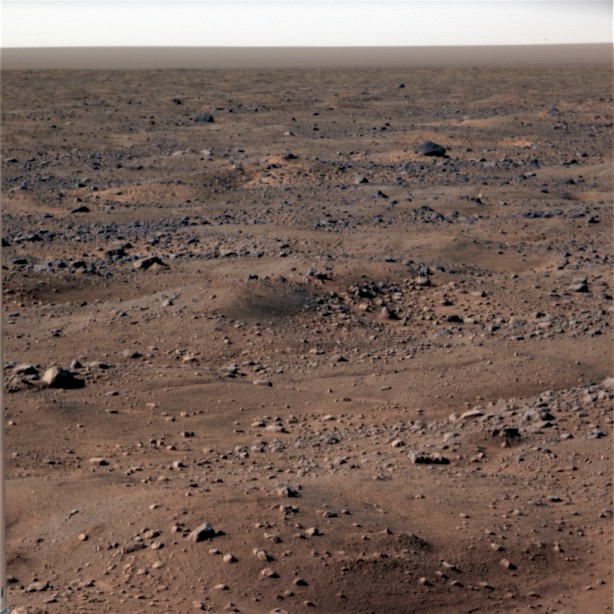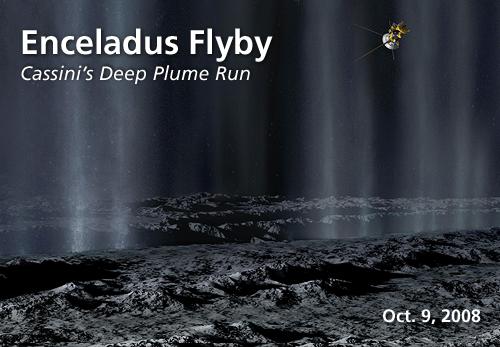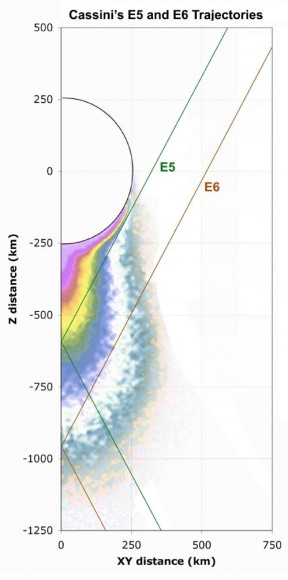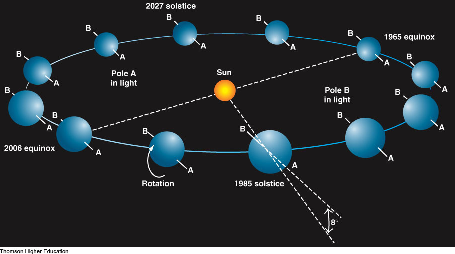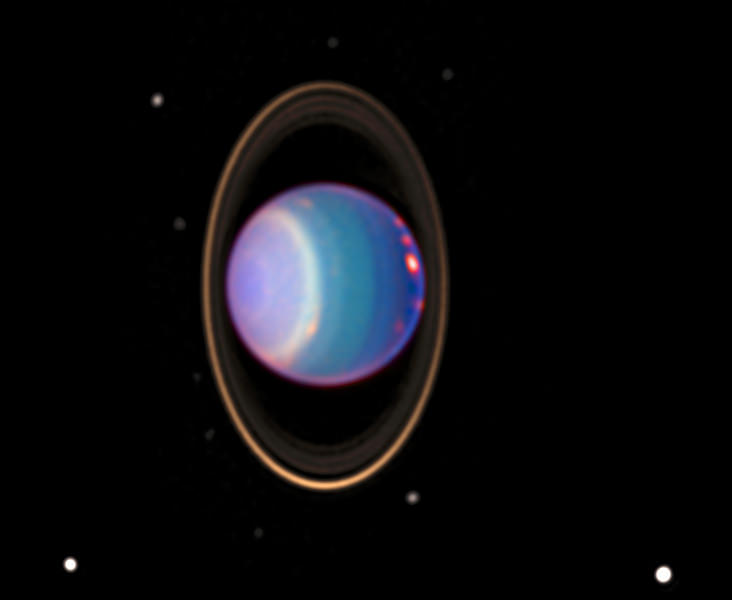[/caption]
The days are getting shorter for the Phoenix Mars Lander, and as fall approaches on Mars’ northern plains, the scientists and engineers for the mission are quickly trying get as much done before power levels on the lander drop too low for any more scientific activities. In the image here, blue-ish white frost appears on Mars surface every day now as the temperatures continue to drop. This image was taken on the 131st Martian day or sol of the mission, October 7 here on Earth. Clearly visible are the interlocking polygon shapes that form in permafrost from seasonal freezes and thaws. These polygon patterns were seen in orbital pictures taken by the Mars Reconnaissance Orbiter, as well as other spacecraft, and are part of the evidence that Mars’ north polar region harbors large quantities of frozen water.
The Phoenix Lander has dug more trenches in Mars soil in both the low troughs and high peaks of the polygons, and is scooping the soil into onboard science laboratories for analysis. About two weeks ago, Phoenix moved a rock nicknamed “Headless,” about 0.4 meters (16 inches) with its robotic arm. Then soil from under the rock was scraped up by the scoop at the end of the arm and and delivered to the lander’s optical and atomic-force microscopes.
Scientists are conducting preliminary analysis of this soil, nicknamed “Galloping Hessian.” The soil piqued their interest because it may contain a high concentration of salts, said Diana Blaney, a scientist on the Phoenix mission with NASA’s Jet Propulsion Laboratory, Pasadena, Calif.
As water evaporates in arctic and arid environments on Earth, it leaves behind salt, which can be found under or around rocks, Blaney said. “That’s why we wanted to look under ‘Headless,’ to see if there’s a higher concentration of salts there.”

Phoenix scientists also want to analyze a hard, icy layer beneath the Martian soil surface. The robotic arm has dug into a trench called “La Mancha,” in part to see how deep the Martian ice table is. The Phoenix team also plans to dig a trench laterally across some of the existing trenches in hopes of revealing a cross section, or profile, of the soil’s icy layer.
“We’d like to see how the ice table varies around the workspace with the different topography and varying surface characteristics such as different rocks and soils,” said Phoenix co-investigator Mike Mellon of the University of Colorado, Boulder. “We hope to learn more about how the ice depth is controlled by physical processes, and by looking at how the ice depth varies, we can pin down how it got there.”
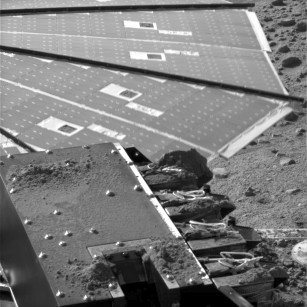
Over the weekend, on the 128th Martian day, or sol, Phoenix engineers successfully directed the robotic arm to dig in a trench called “Snow White” in the eastern portion of the lander’s digging area. The robotic arm then delivered the material to an oven screen on Phoenix’s Thermal and Evolved-Gas Analyzer.
The Phoenix team will try to shake the oven screen so the soil can break into smaller lumps and fall through for analysis.
The Phoenix lander, originally planned for a three-month mission on Mars, is now in its fifth month. As fall approaches, the lander’s weather instruments detect diffuse clouds above northern Mars, and temperatures are getting colder as the daylight hours wane.
Consequently, Phoenix faces an increasing drop in solar energy as the sun falls below the Martian horizon. Mission engineers and scientists expect this power decline to curtail activities in the coming weeks. As darkness deepens, Phoenix will primarily become a weather station and will likely cease all activity by the end of the year.
Source: Phoenix news site

